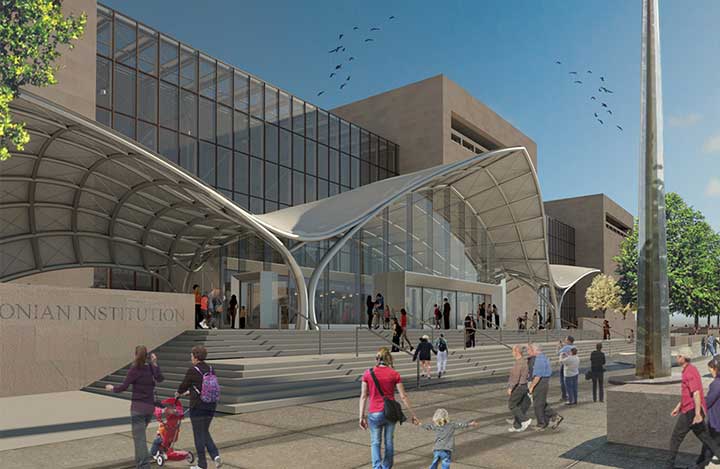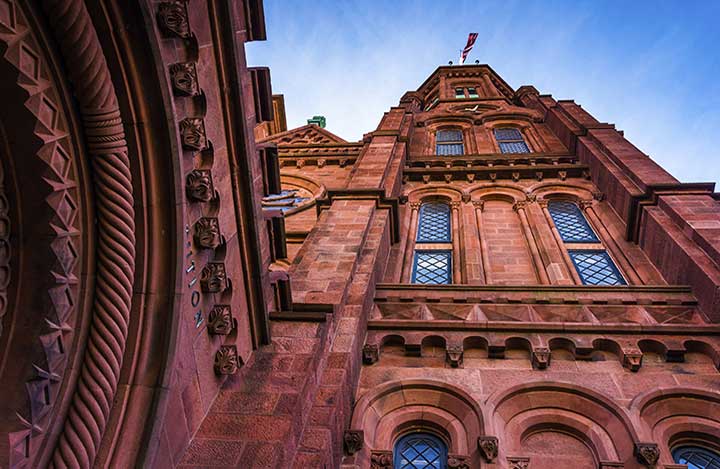This is just one instance among the myriad of physical and electronic security designs our team has undertaken for Federal agencies.
Our team spearheaded the electronic security systems design for the comprehensive renovation and modernization of a distinguished federal agency's 500,000 square foot high-rise office building situated in downtown Washington, DC. The encompassing systems comprised video surveillance, access control, intrusion detection, guard booths, active vehicle barriers, and the establishment of a new Security Operations Center and Control Room. The operations center included a dynamic video wall, command consoles, raised access flooring, and a centralized operations command and control center featuring a security conference war room. Furthermore, the design encompassed a sizable SCIF, adhering strictly to ICD-705 Standards.
As integral members of the multi-disciplinary design team, we were actively involved in every phase of the standard design-bid-build process. This included Schematic Design, Design Development, Construction Documents, Bid & Procurement, and Construction Administration services. Noteworthy project highlights include historic preservation, sustainable design, and BIM modeling throughout the construction phase, inclusive of the integration of COBie requirements.
Our team has been privileged to contribute to several remarkable projects at one of the world's most secure and prestigious facilities.
As the subject matter experts, our team members conducted three comprehensive security studies and subsequent implementation projects for a confidential federal security organization. The studies focused on the Video Surveillance System, Intrusion Detection System, and Mass Notification System. Building upon study findings, our team members prepared design documents and provided construction administration services for one design-bid-build project and two design-build projects, overseeing the implementation of mitigation measures.
The studies entailed capturing over 500 owner requirements through stakeholder interviews, conducting Gap Analysis to bridge the gap between the current and desired environments, and presenting recommendations for improvement. These recommendations encompassed enhancements to electronic security systems, operations and maintenance procedures, data transmission systems, duct bank and power infrastructure, along with implementation plans and cost estimates.
Furthermore, our team revised Concept of Operations (CONOPS) procedures to seamlessly integrate additional technologies and capabilities into standard operating procedures for both daily operations and emergencies. This involved documenting existing CONOPS for on-site security personnel and the Joint Operations Center, which oversees monitoring, command, and control operations.
For decades, designing physical electronic security systems for museums has been our specialty. We've guided, designed, and overseen construction projects for hundreds of projects, to include some of the most visited museums in the world.
One of our favorite projects was the complete revitalization of a 687,000 square foot museum on the National Mall in Washington DC. Our involvement began during the master planning phase, where we offered insights on risk mitigation and engineered the physical and electronic security system. Notably, as one of the top 5 most visited museums globally, with over 7,000,000 annual visitors, managing visitor flow posed a significant challenge. Our proposed solution introduced security screening vestibules at the primary entrances, enhancing security while creating a majestic arrival experience and improved wayfinding by creating a visual destination for visitors. This transformation not only elevated the visitor experience, it created efficient visitor screening and allowed for the restoration of several galleries to their original grandeur. Furthermore, the vestibules serve as a safeguard against chemical, biological, and radiological (CBR) risks by isolating HVAC systems and maintaining air pressure differentials.
Throughout the design process, our team addressed various physical security requirements, including anti-ram measures, active-shooter protection, forced-entry resistance, ballistic mitigation, Crime Prevention Through Environmental Design (CPTED), and CBR mitigation, alongside meticulous space planning.
A significant challenge involved designing the replacement of electronic security systems while ensuring operational continuity during construction. This was achieved through phased implementation across eight construction phases and the deployment of temporary protection measures for artifacts during constriction. The renovation also entailed relocating the entire museum's security department, establishing a new security operations center, weapons storage/issue facilities, and upgraded security officer amenities. To future-proof the museum, we implemented a forward-looking strategy, introducing zone distribution boxes (ZDBs) for flexible exhibit gallery reconfigurations without altering the security infrastructure. This strategic approach promises significant cost savings in the years ahead.
Recognizing the earlier security is incorporated into a project the more effective, aesthetically pleasing and cost effective it is. A forward-thinking financial institution engaged our team to design their new corporate headquarters before final site selection. This proactive approach empowered us to contribute to site and space programming initiatives, embedding security principles into the 47-acre campus and 240,000 square foot building through Crime Prevention Through Environmental Design (CPTED). This resulted in a facility with built-in layers of security starting from the site perimeter and extending six layers deep into critical areas, leveraging natural access control and territoriality.
Furthermore, our team spearheaded the design of the electronic security system for the new facility. This entailed methodically selecting and designing enterprise-level access control and video surveillance systems, along with designing a comprehensive security operations center. Acting as the owner’s technical representative during construction, we collaborated closely with the general contractor to oversee infrastructure installation by the electrical contractor and device installation and programming by the security integrator. The culmination of the project involved our team overseeing comprehensive testing and commissioning of the electronic security system, conducting functional tests for every alarm point, and facilitating remediation of any failures to ensure the owner's security department took possession of a fully operational facility.
When a Federal Government Department embarked on the construction of a new headquarters campus in Washington, DC, our team collaborated closely with their security leadership for over two years. We contributed to multiple projects aimed at designing and constructing the physical and electronic security systems for the Level 5 campus, encompassing the campus perimeter, the Department’s main headquarters building, and sub-department facilities.
The Campus Perimeter was fortified with fences, passive and active vehicle barriers, numerous guard houses, lighting infrastructure, a visitor center, multiple access control points, a commercial vehicle inspection station, exterior video surveillance systems, exterior perimeter intrusion detection systems, fiber network, radio network, and integrated capabilities into the command center. The Department’s headquarters building, housing the Department’s Secretary, underwent a full technology systems design for the 270,000-square-foot historic restoration of the GSA facility. This included electronic security, telecommunications, and audio-visual systems, all integrated within multiple classification zones while preserving the historic facility. Meanwhile, the new sub-department headquarters facility, spanning 1.2 million square feet, underwent phased design services to align with the project's fast-paced construction schedule. The design incorporated turnstile systems, electronic card access systems, video assessment and surveillance systems, intrusion detection systems, and multiple Sensitive Compartmented Information Facilities (SCIFs), ensuring comprehensive security measures across the expansive campus.
Our team has led the design and consultation for over 30 diverse vehicle and pedestrian entry control points, visitor offices, and commercial vehicle inspection facilities. These projects span a range of facility types, including military installations, federal agencies, museums, and higher education institutions, addressing varied design requirements and standards to mitigate diverse risk profiles.
The projects included the establishment of security zones, implementation of traffic calming measures, and the design of anti-ram barriers, fencing systems, active vehicle barriers, vehicle screening stations, automatic credential authentication, and video surveillance systems to bolster security operations. Our comprehensive services for these projects typically entailed site surveys, operational analyses, conceptual design development, product selection, construction document preparation, cost estimation, bid and procurement support, and construction administration oversight.
In adherence to Unified Facilities Criteria (UFC) 4-010-01 DoD Minimum Antiterrorism Standards For Buildings, all US Military construction projects must meet stringent requirements. The primary goal of this standard is to mitigate collateral damage and minimize the scope and severity of mass casualties in the event of a terrorist attack.
Our team possesses unique qualifications for such projects, with experience in the armed forces specializing in mobility, counter mobility, explosives, and serving in anti-terrorism/force protection roles and facility guard forces. Leveraging these real-world skillsets, we have provided consulting expertise for over 50 military construction (MILCON) projects, ensuring meticulous adherence to prescribed standards.
While implementing codes and standards may initially seem straightforward, challenges arise when project-specific constraints and the realities of the built environment present obstacles or conflicting requirements. It is here that our team excels, articulating the intent of Antiterrorism Standards and identifying opportunities to not only meet but exceed minimal requirements.
One notable project exemplifying our unique consulting approach was a US MILCON Project conducted overseas in collaboration with one of the Five Eyes (FVEY) nations. Many foreign design team members and construction contractors were unfamiliar with US requirements for antiterrorism. In response, our team developed a comprehensive Basis of Design, collaborated with other design disciplines, and meticulously reviewed design documents to ensure seamless incorporation of UFC's requirements into the design, ensuring constructability.


